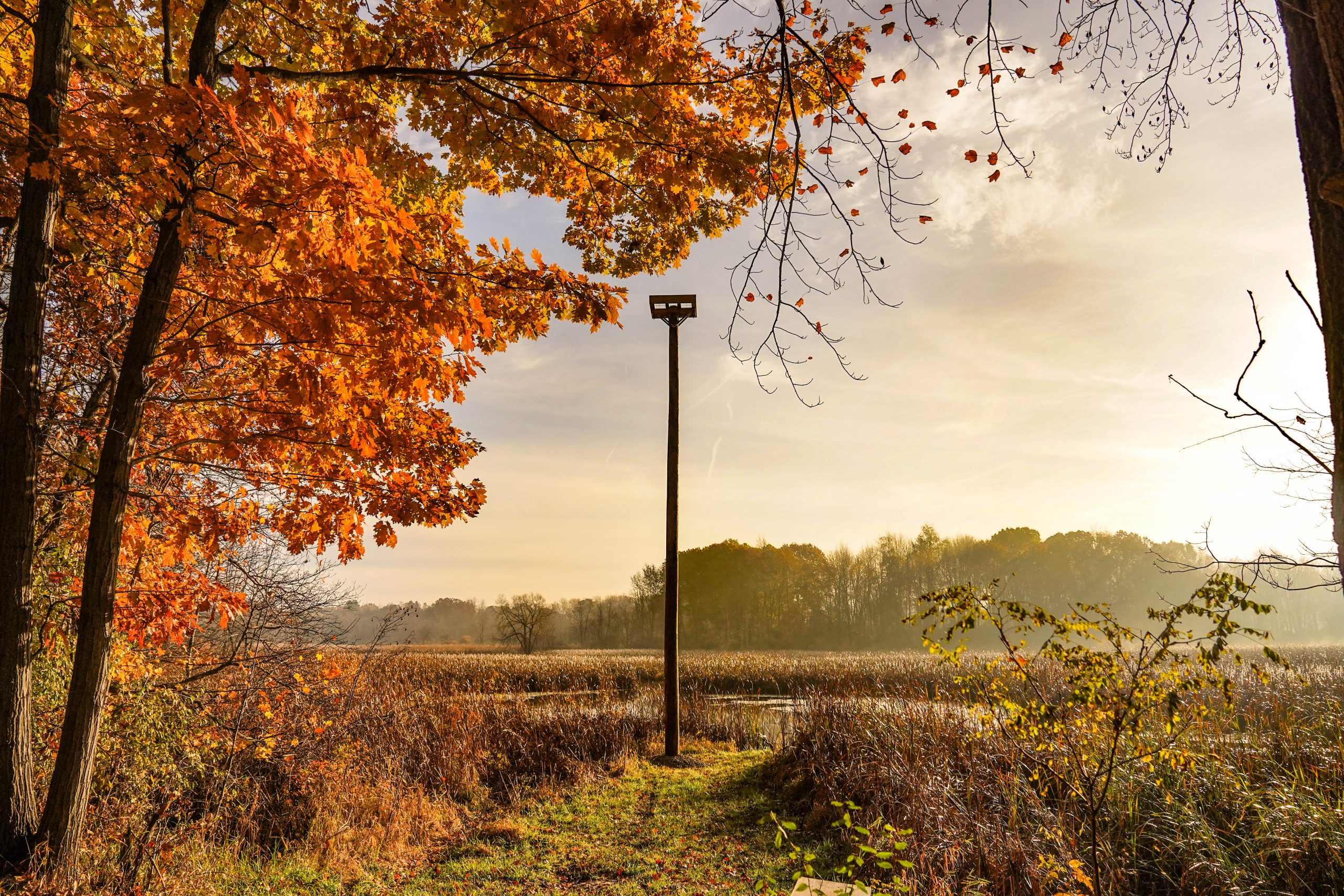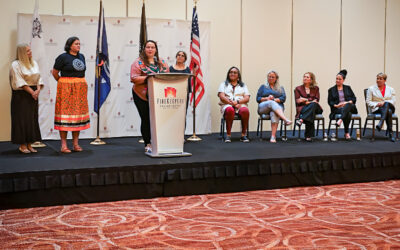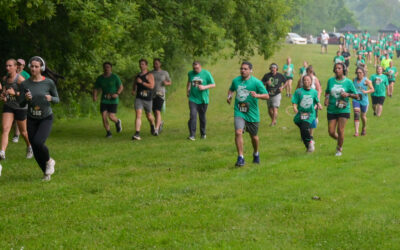If you’ve spent any time on the Pine Creek Indian Reservation, you’ve heard it. It changes from season to season, the birdsong melody. We know the rhythm of the fall, spring, winter and summer by the sandhill cranes trumpeting and trilling, the cardinals chirping and calling, the mourning doves’ melancholia in the morning.

Soon, we could be hearing a new call; the call of the bald eagle.
In the fall of 2021, NHBP’s Environmental and Public Works departments teamed up to install an eagle nesting platform that stands 43 feet above some of The Reservation’s wetlands, near the Wild Rice ponds for easy viewing. Under federal protective regulations, humans aren’t allowed within 330 feet of the platform’s base, which sits across the street from NHBP’s Government Center, where some of the property’s Ricing paddies can be found.
For Environmental Director John Rodwan, this nesting platform has been 15 years in the making.
“We’ve talked about installing an eagle nesting platform from the beginning because we knew the bald eagle is culturally significant,” he said. “Even 15 years ago, they were a lot scarcer than they are now.” True, the sight of a bald eagle has become increasingly common in recent years, with a trend toward growth. “We’re getting calls almost weekly saying people have spotted bald eagles,” Rodwan said. “Some people have never seen one before. Some people are starting to see patterns where they’re coming back and there are several known nests.”
Rodwan himself has seen the sacred birds around The Reservation; in one instance, a bald eagle was feeding on a dead opossum found in the small Ricing pond at the Environmental Department’s outpost.
Gathering the Materials
Seeing this bird reignited something for Rodwan, leading him to take inspired action, but a big hurdle in the project has been sourcing the suitable materials to create the platform. Finally, with the help of DPW Director Darrel Vorce, the pair were able to find a utility pole from a locally owned electric company in Marshall, Michigan, after a handful of weeks of research, calls and dead ends.
Initially, Rodwan was a little concerned about the quality of the utility pole and its platform, but he and the team were pleasantly surprised.
“That thing is gorgeous. I think we’re definitely going to have one of the nicest platforms in the state,” he said with a proud smile. “It’s straight as an arrow.”
The utility pole is 50 feet in length, with 7 feet buried in the earth for stability. When first erected, the platform stood bare. With the help of Vorce and DPW’s bucket truck that can reach a maximum height of 60 feet, Rodwan plans to add logs and branches to create a more natural feel and a strong home base for future feathered tenants.
Bald eagles are sea eagles, meaning they live near waterways, and prefer to make their nests “atop a large, isolated tree or pinnacle of rock located within easy flight of water,” according to britannica.com. The nests usually measure about 5 feet wide but can grow to twice the size over time as more branches and twigs are added. Lack of proper nesting spaces has contributed to slow population growth over the years.
“One of the problems with large raptors is a shortage of suitable nesting habitats,” Rodwan said. “Farmers are taking down all the tree rows and we’re always chipping away at our old forest growth.” Furthermore, the Pine Creek Indian Reservation is about 40% wetlands, ideal eagle habitat.
Future Flying
“We would hope to have a nesting pair start scouting early next spring and start developing a nest shortly thereafter,” Rodwan said.
The U.S. Department of Fish and Wildlife recommends a 330-foot radius to safely and naturally observe the majestic and sacred birds.
“What’ll happen is we’ll abide by the Fish and Wildlife recommendation of 330 feet,” Rodwan said, “so we’re not going to want a lot of traffic down there. At some point, the eagles might acclimate a little bit, but we’re still not going to want people hanging around the pole.”
Fortunately, Rodwan was clever enough to choose a spot for the nesting platform that is almost eye level with the ridge at the necessary distance.
“Bald eagles were recently de-listed as endangered because their population is doing so well. That de-listing does come with a lot of restrictions,” Rodwan said. “But we do have a chance. Eagles are coming back.” Rodwan anticipates receiving several questions about nest cams and has begun his research. Without Wi-fi access on the Rice pond, Rodwan is unsure of his options.
As for fallen feathers, more research is necessary to establish protocol and procedures, Rodwan said, and will be available at a later date.
Going forward, Rodwan and the Environmental Department are looking forward to discovering the lives of Eagles alongside the NHBP community. The department is also seeking input from Tribal Members regarding the installation of a nest cam. Rodwan can be reached by email at john.rodwan@nhbp-nsn.gov or by phone at 269.704.8507.




0 Comments